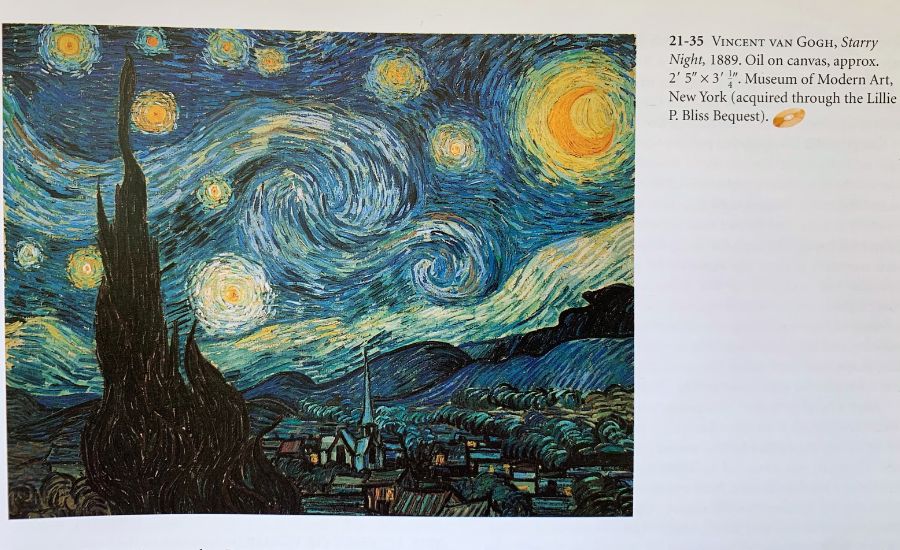Art has never stood still; it’s always been on the move, evolving, innovating, and, most importantly, repeating—just like the patterns it so diligently explores. From the more rigid patterns in Giotto’s frescoes to the painterly and playful patterns in Matisse’s paintings, patterns have been a mainstay, quietly adding important elements to a painting. This here isn’t just about breaking down what patterns are in art but understanding how to add pattern to your own artwork.
Understanding Pattern in Art
To appreciate the role of patterns in visual art, we must first deconstruct what a pattern is. Essentially, a pattern is the repetition of a unit, like a shape, color, or form. When art embraces these repetitions, it invites the viewer into an inherently rhythmic experience. Sometimes these patterns can be found in nature, architecture, or the tapestry of daily life. Artists have long recognized these patterns and replicated them on canvas.

Use of Patterns in Art History
One of the best ways to understand patterns in art is to take a look at how artists in the past used pattern in their art. This also shows what could be possible for your own work. These artists use pattern in a number of different ways.
A common method is to use pattern in a decorative manner. This means that the pattern may be visible on the surface area of an object. For example, the patterning on the floor in the Hans Holbein painting below. However, pattern can be used on a deeper level where it is embedded into the composition and paint application. Here we will take a look at all the possibilities.

Giotto’s use of patterns
Giotto, a very important painter who lived from 1266 – 1337 provides some very early examples of the use of pattern in a painting. Though he made extensive use of pattern, they are not the central focus of his work. That is, they do not distract from the focal point of the painting. Rather, they add and support the overall composition.

In the image above we see Giotto’s painting from the basilica of San Francesco – “Pope Innocent III approves the rule of the franciscan order”. Notice how the entire back wall is covered in a circular floral diamond pattern. We see other smaller moments of pattern as well. As you study the painting you will be surprised at how many patterned moments you find in it. Despite the fact that pattern makes up a big part of the painting, it does not distract from the focal point of the work. Imagine his painting without any pattern at all, it would dramatically alter the visual richness of the work.
Brush stroke patterns by Van Gogh

Van Gogh also paid close attention to pattern, though would use it in a different way. In his painting starry night we notice how he created patterns by manipulating the shapes in the sky to create swirls. The way in which he creates the brush strokes in his painting is what allow for the pattern creation.
So he isn’t creating decorative patterns ‘on’ objects, but is rather superimposing pattern into the very fabric of the composition.
Incorporating Patterns into Your Own Work

Making patterns in your own painting isn’t just about slapping on some repeats and calling it a day—it’s about understanding the conversation you’re holding with the canvas, the viewer, and the masters before you. To effectively incorporate patterns, artists need to be part researcher, part composer, and, most importantly, part creator and artist.
Finding Your Pattern Language

Begin by looking at your favorite artists, not just to replicate their patterns but to understand why they used those patterns. Study the context of cultural significance, artistic movements, and personal predilections. Then, look at your own life for informal patterns— the pattern on your kitchen towel, plates and dishes, or even the organic patterning on plants in your garden. These are the inroads to creating original patterns that can be wholly and uniquely yours.
You can construct a still life with a mix of different patterned items. Though, its important to not go overboard with pattern in art. You want to be careful to not overdo it with the amount of pattern you include. As it is important to find a good balance between patterned and non-patterned areas.
Balance and Control with Patterned Art

For patterns to enhance rather than overwhelm, balance and control are paramount. Sometimes, this means having one element of a composition that isn’t patterned, a contrast that can underscore the rest. It also means experimenting with color and scale within the repetition, knowing when to switch it up and when to stay the course.
For example, in the painting above “Sylvia Darning” by Harold Gilman we see a good balance between the amount of patterning and non patterning. The main pattern we see is on the wall of the room, which covers a significant portion of the space. Even though the pattern covers a large area of space, it is balanced because the rest of the painting doesn’t have any pattern.
Practice Incorporating Pattern in Art

Take a deeper look at patterns even if you have already been using them in your art. Find patterns that inspire you and interest you. Practice on painting and incorporating these patterns into your painting, while maintaining them in a painterly way.
It can be easy to treat patterns in a rigid way in a painting. However, it is good to remember that you are working with paint and need to incorporate a sense of space and light into your patterned areas as well. With all of these things kept in mind, you will be well on your way to creating terrific patterned paintings. Let me know in the comments below how you plan to incorporate pattern into your work!
Want to remember this? Save How to Recognize & Use Patterns in Art to your favorite Pinterest board!






18 thoughts on “Discovering Pattern in Art: A Look into Patterns in Paintings”
I experienced a touch of what you’ve written about changing the background in study #2’s redo! “Felt it was necessary: now I understand why!
Thank you, Elisabeth
So glad to hear that Patricia! 💙
Thank you Elizabeth for your articles. Each one draws attention to an aspect that improves one’s understanding of the artists intent and technique and brings fresh insights to the viewer. Your examples exemplifies the vast range of knowledge you bring to your subjects. Know that this is much appreciated and enjoyed
Thank you so much for your kind words Barbara, am so glad to hear that 🎨
Interesting article. I was just about to do a painting of a colorful sofa and pillows and was thinking of adding my washboard (an instrument) and lap dulcimer. It will be perfect as they both include patterns. Can’t wait to start.
That sounds like it will be a very interesting and intriguing painting with those items!
Hi Elisabeth! I love patterns but have always used them alone and never incorporated them into any other art I’ve done. What fun it will be to explore your approach to adding them to art. Loving your creativity and teaching skills. Thanks! Happy Spring. Barb.
Thank you so much for your kind words Barb – glad that this inspired you explore adding pattern into your art!
Love your articles. Simple and engaging but very informative.
Thank you for your kind words, am so glad you enjoy them!
Thanks for the article on patterns. Gustav Klimt comes to mind as he also used patterns like the ones in cloth and wallpaper.
Oh yes, he is a great example of pattern being used in painting. I nearly included one of his pieces in this article.
Thank you for this lesson on Patterns in Art, Elizabeth. It is most interesting.
You are so welcome Tereza – glad that you enjoyed!
Really fascinating topic. I especially like the Gilmore painting employing patterns almost everywhere. Since patterns generally appear to be supporting areas in a work, it seems to me that they can almost be considered as substitutes for negative space. As far as how I would plan to use them, I’ll have to see. (My next focus is resuming your Painting with Color course.) Thanks for this article.
Hi Bud, Glad you also enjoyed that painting and yes you are right with that. Pattern can in a way be considered a substitute for negative space. Using it can lead a painting in very interesting directions. I look forward to seeing your work in the painting with color course!
Harold Gilman’s painting example you used is great and also really shows the colour spots you so stress to create our paintings with. Thanks for the reminder to work with pattern thoughtfully. I can see where it keeps coming up in my brush strokes.
You are so welcome! Am glad you also enjoyed Harold Gilman’s painting examples – they are wonderful with their spots of color.